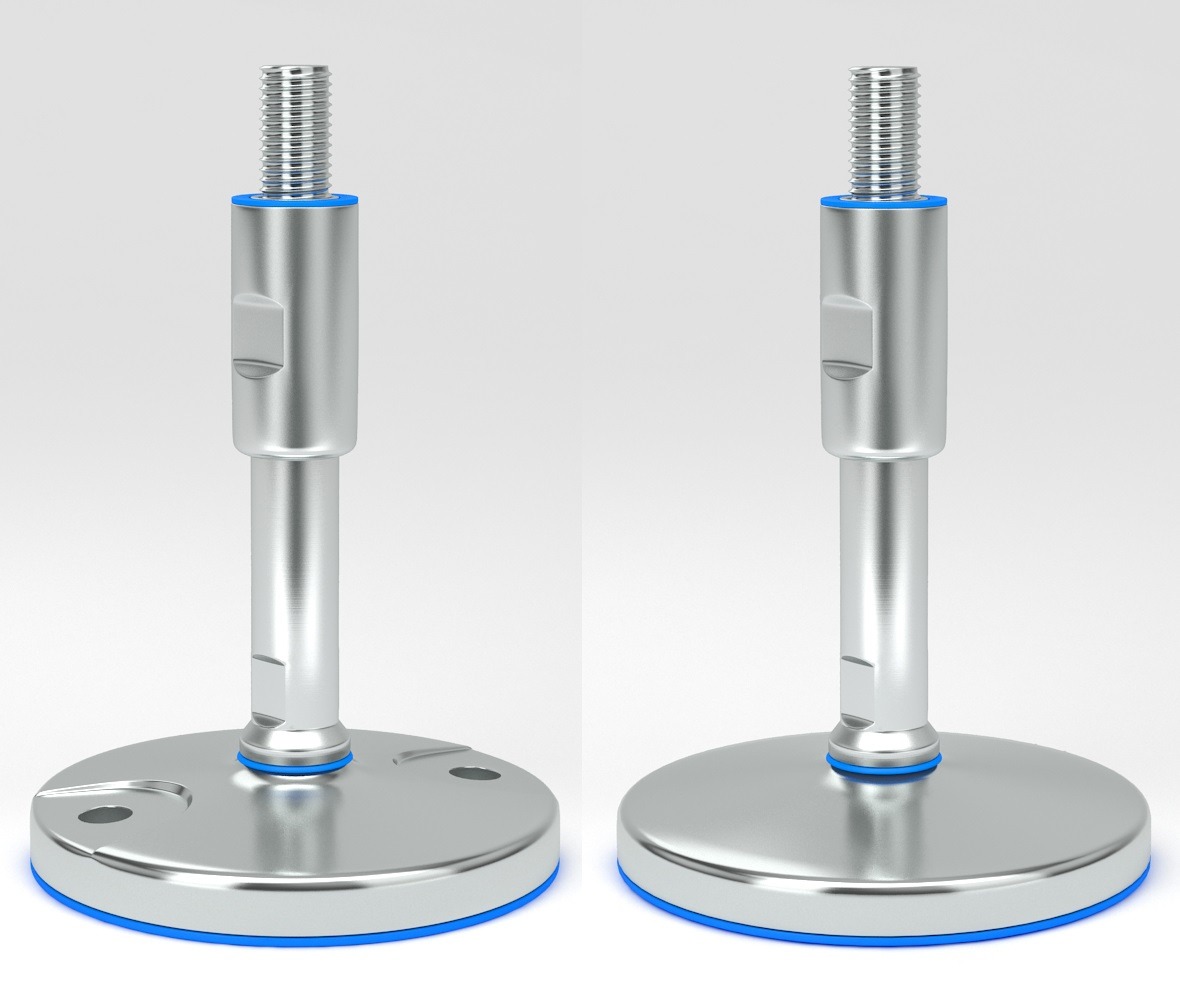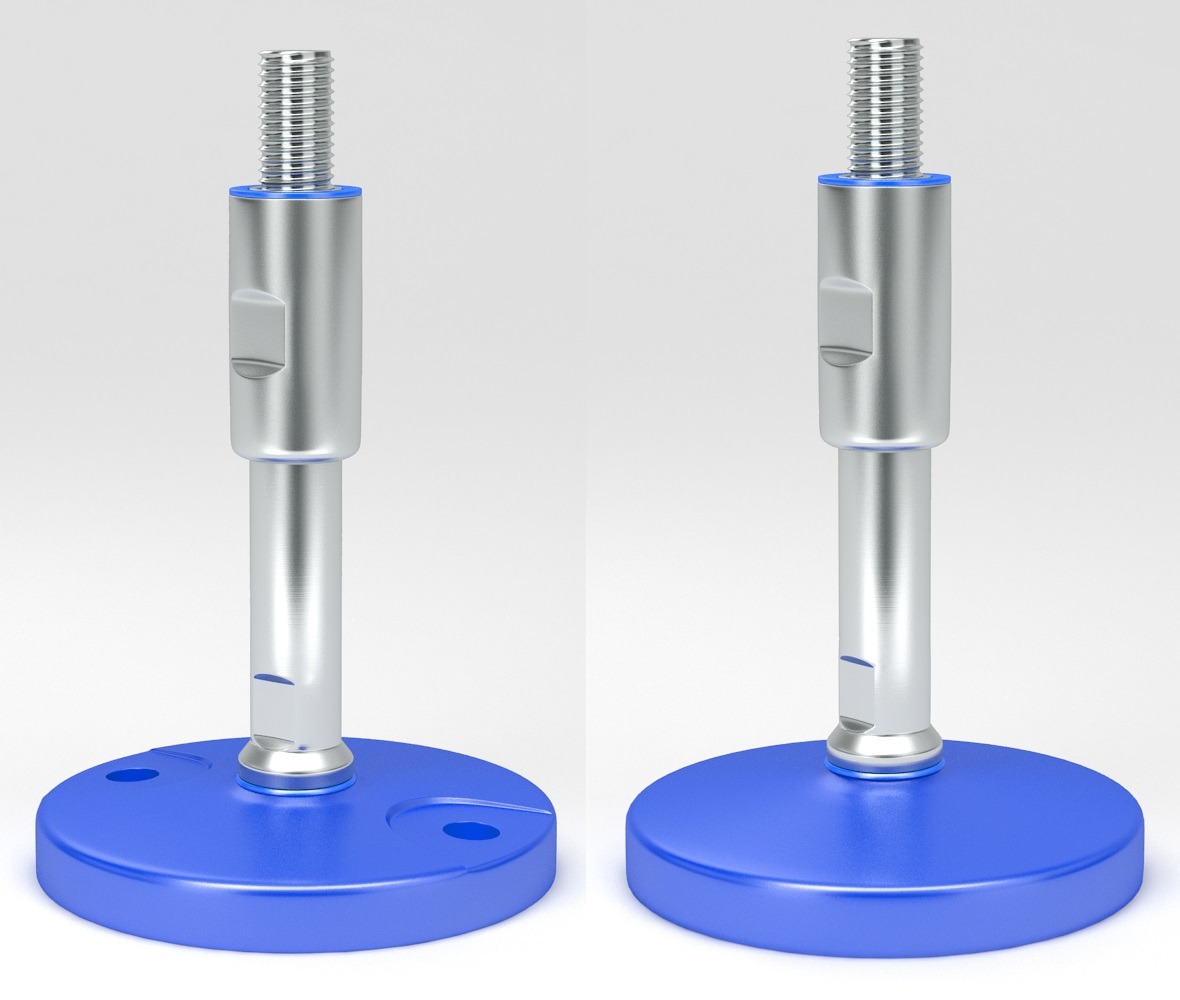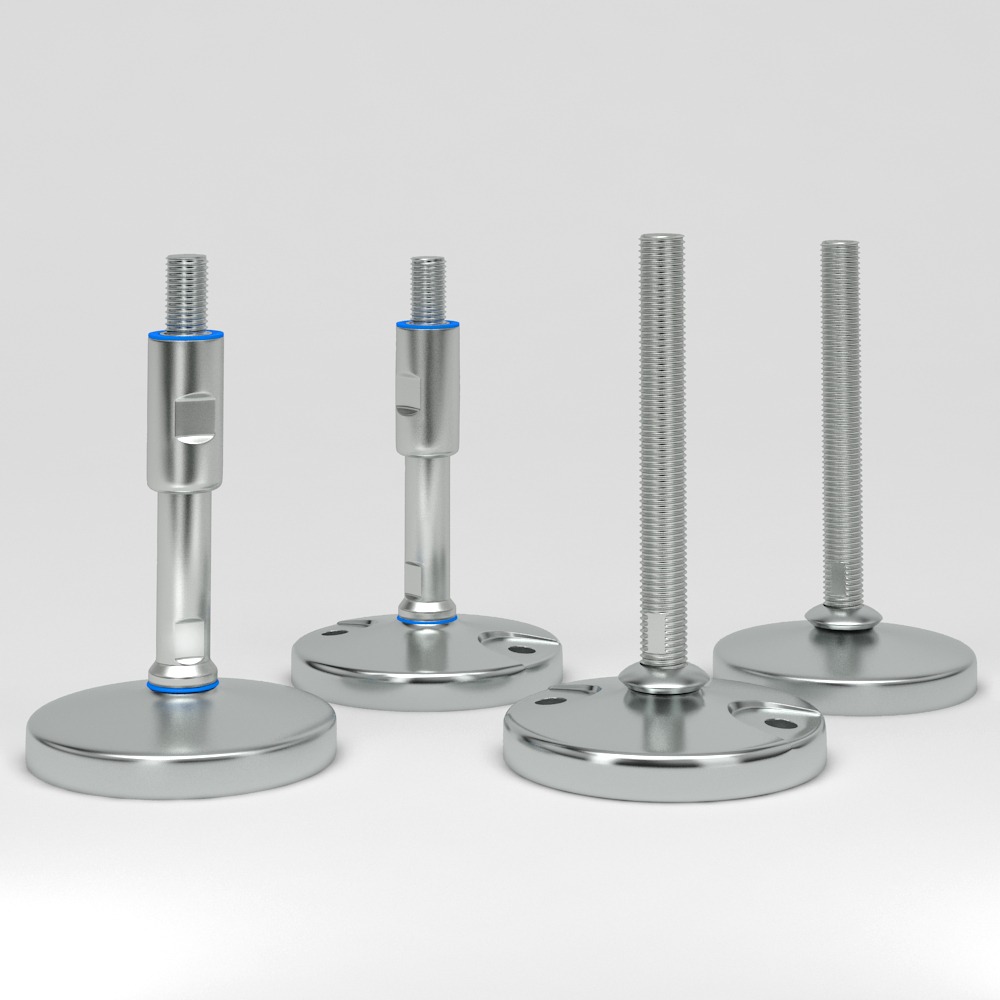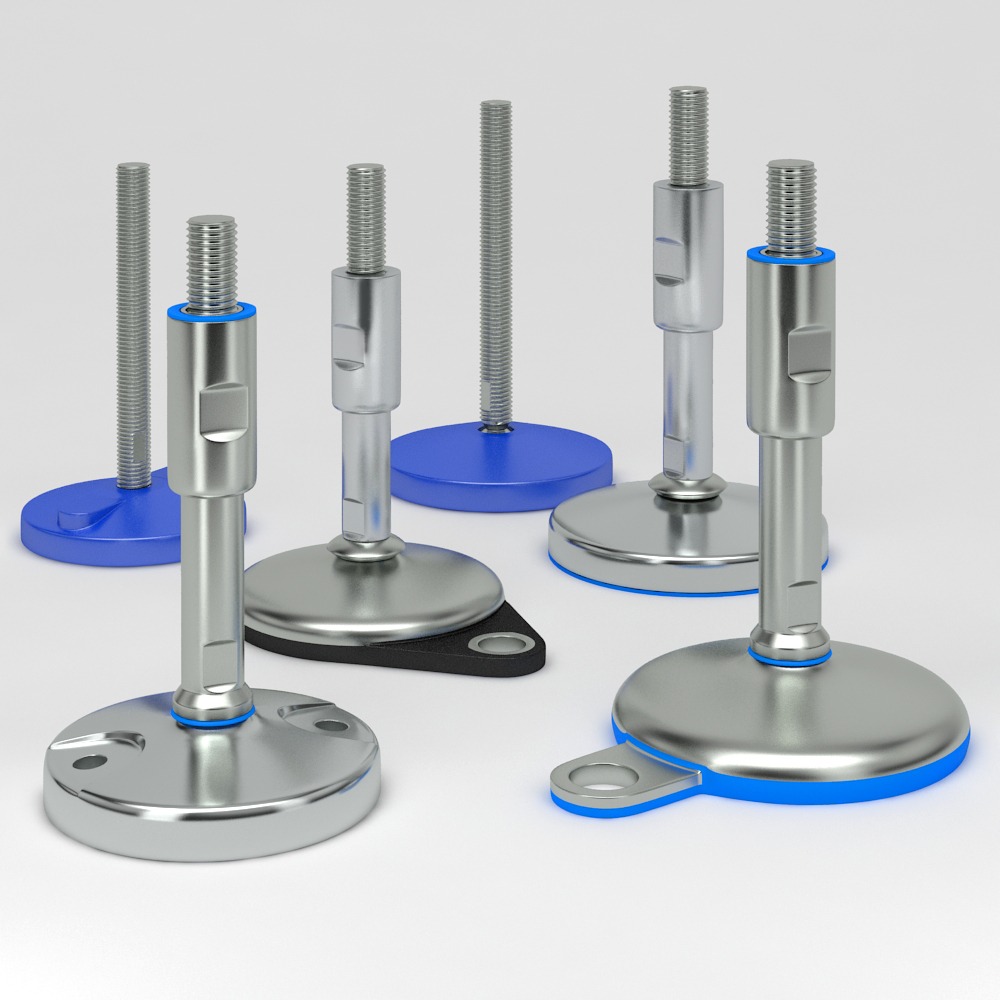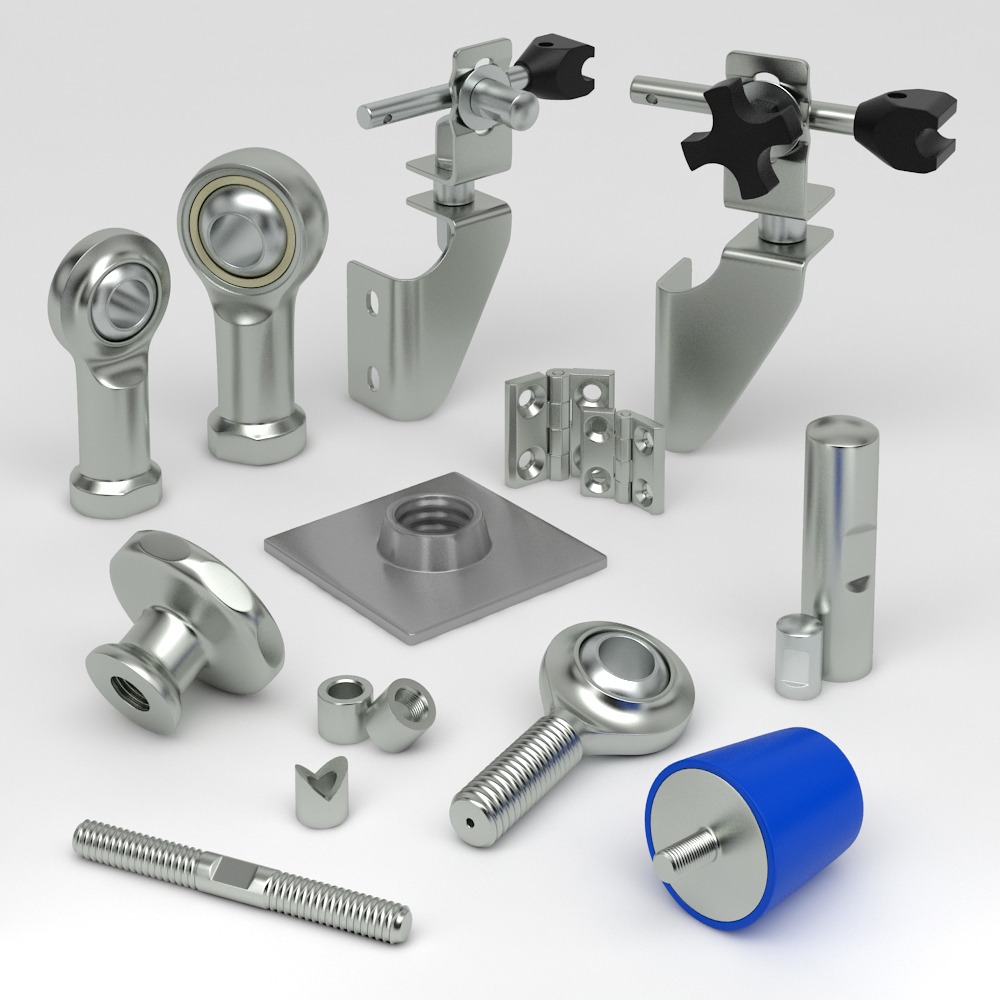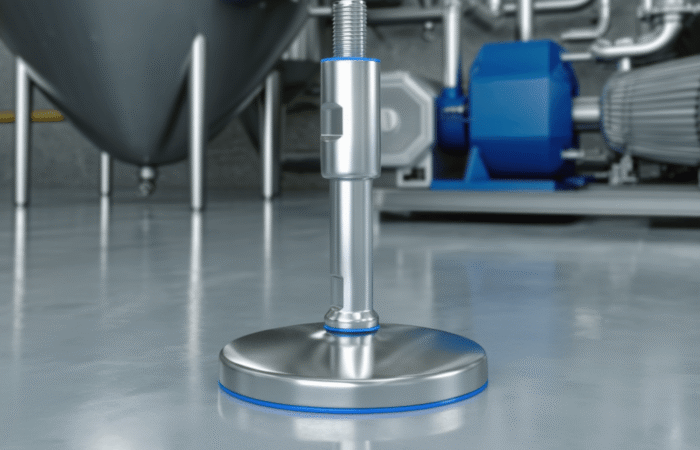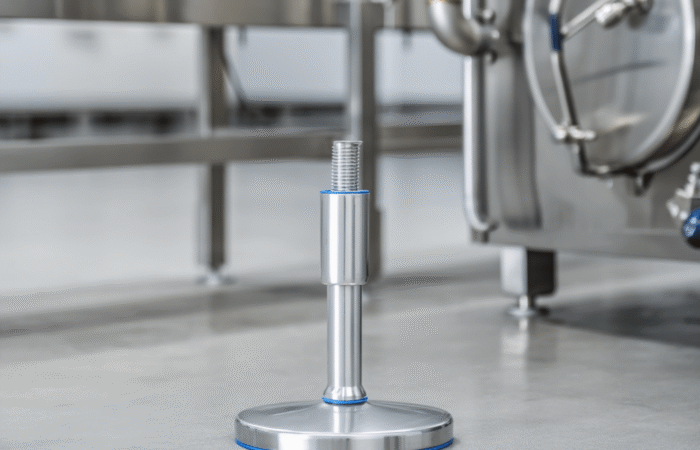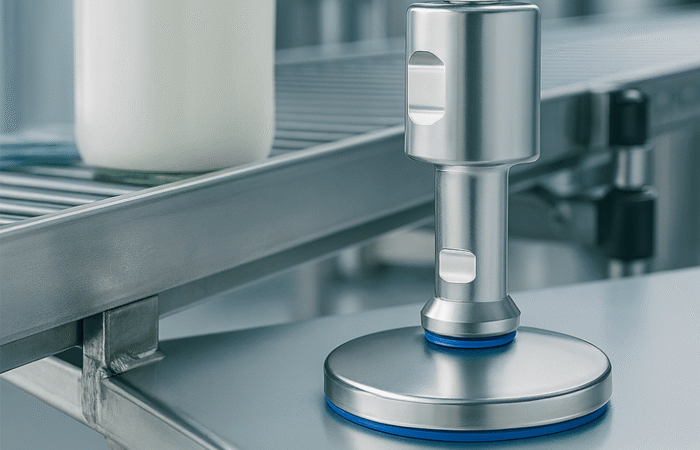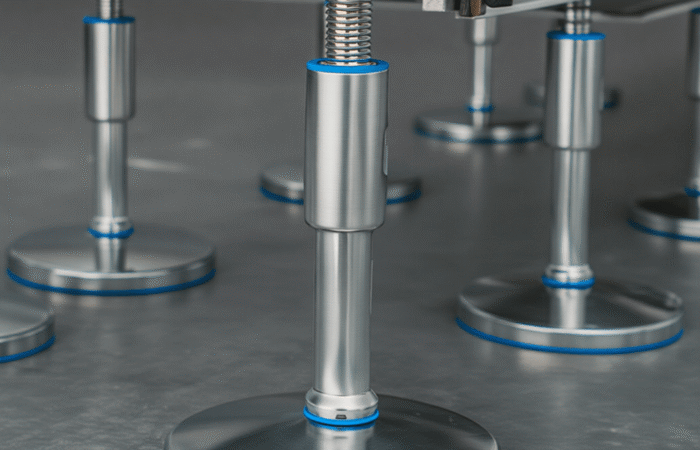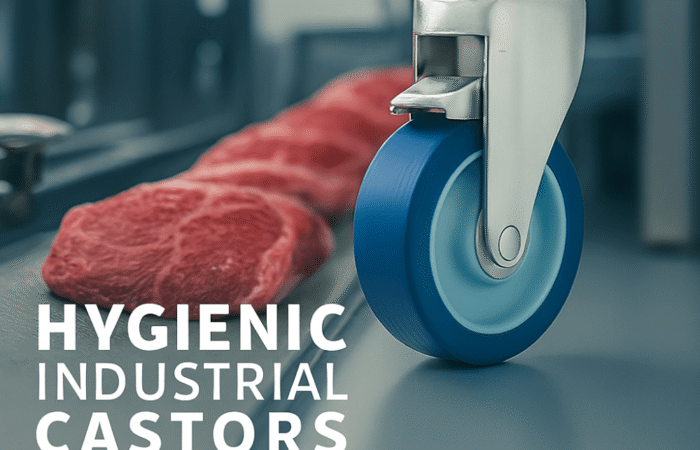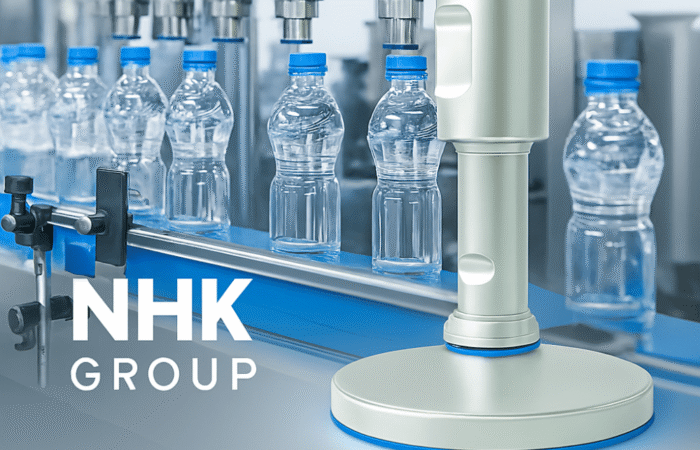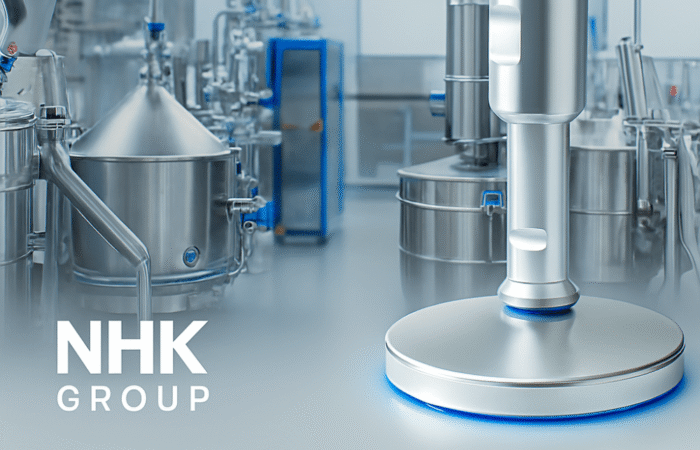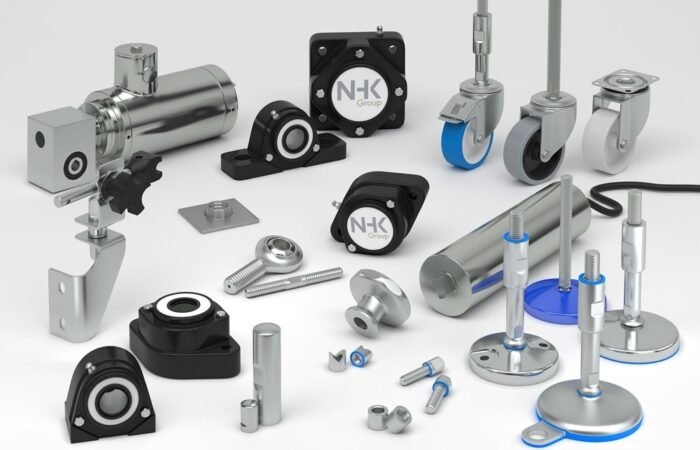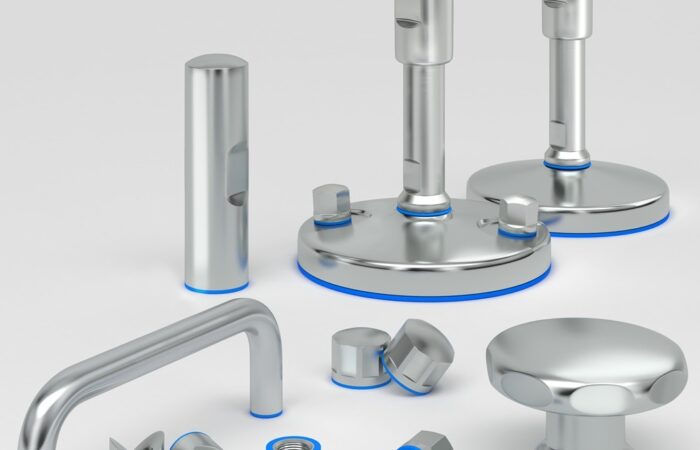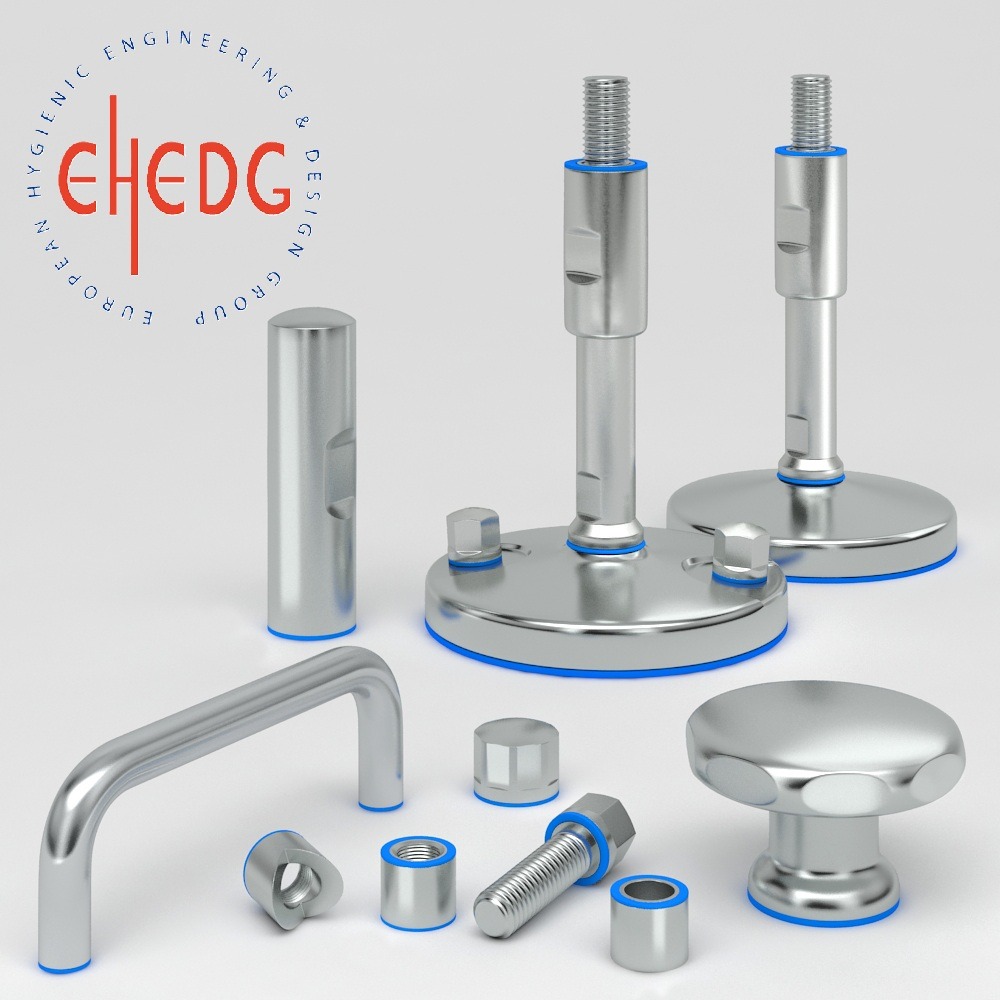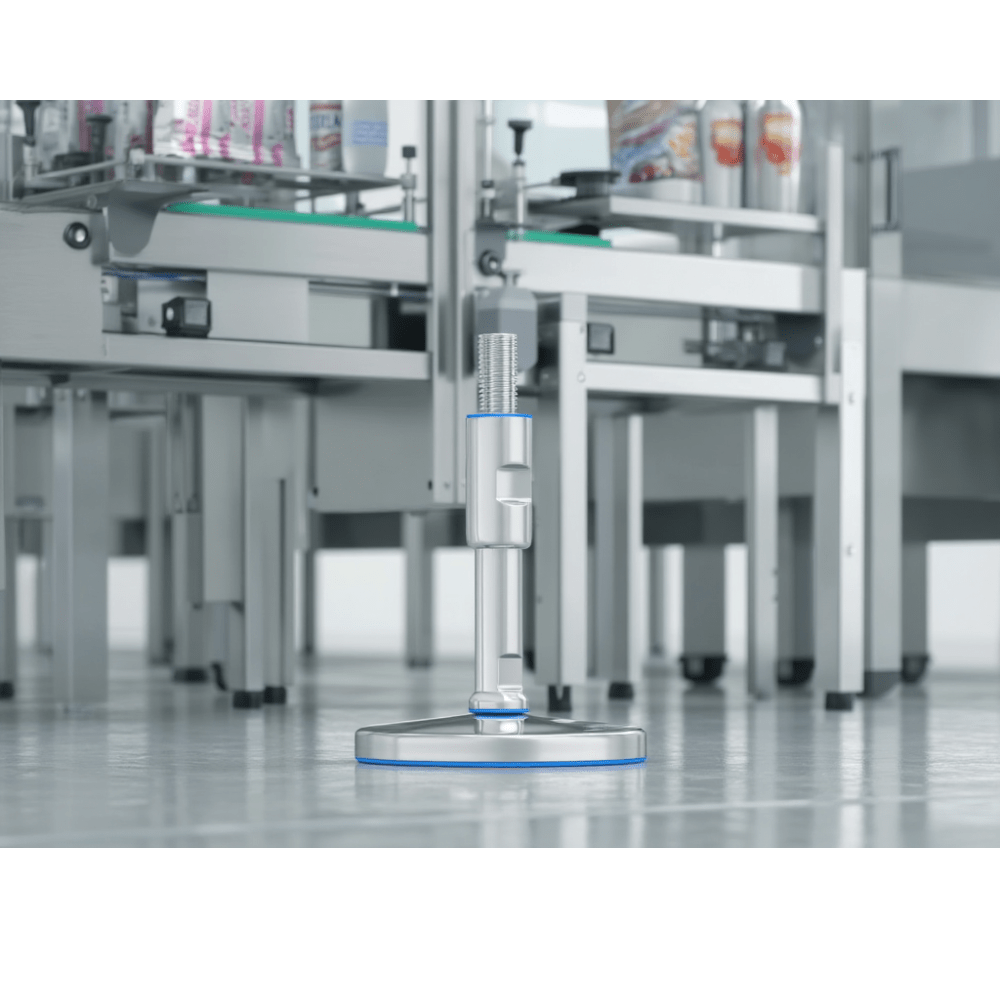
Stainless leveling feet in hygienic EHEDG design
In industries where hygiene and safety are paramount, such as food processing, pharmaceuticals, and biotechnology, every component in the production line must meet stringent sanitary standards. The European Hygienic Engineering and Design Group (EHEDG) has established guidelines to ensure that equipment is designed for maximum cleanliness, preventing bacterial growth and ensuring the highest standards of hygiene. One essential component in achieving EHEDG compliance is stainless steel leveling feet, which offer unparalleled durability, corrosion resistance, and hygiene benefits. In this article, we explore why stainless steel leveling feet are indispensable for hygienic EHEDG design and how they contribute to the integrity and safety of hygienic environments. The EHEDG guidelines were developed to help industries, particularly those handling consumable goods, maintain high standards of cleanliness and prevent contamination. EHEDG-compliant designs minimize crevices, rough surfaces, and other areas that could harbor bacteria or contaminants. In such industries, a single contamination event could result in costly recalls, endanger public health, and damage brand reputation. Therefore, equipment design must align with hygiene regulations to mitigate these risks. Leveling feet play an essential role in maintaining the stability and cleanliness of machinery, which is crucial for hygienic applications. High-quality stainless steel leveling feet enhance the durability, safety, and cleanliness of equipment while ensuring the entire setup meets EHEDG standards. In hygienic environments, equipment undergoes frequent washdowns using harsh chemicals and high-pressure water. Stainless steel leveling feet are highly resistant to corrosion, even in harsh cleaning environments. Stainless steel, particularly grades such as AISI 304 and 316, is inherently resistant to rust and other forms of corrosion, which prolongs the life of equipment and reduces the risk of corrosion-related contamination. The corrosion resistance of stainless steel makes it ideal for applications where both strength and hygiene are essential. EHEDG standards call for equipment designs that minimize areas where bacteria can thrive, such as crevices, cracks, and rough surfaces. Stainless steel leveling feet designed for hygienic applications typically feature a smooth, polished surface that inhibits bacterial growth. Many models incorporate self-draining features, allowing water to flow off the surface during washdowns, further reducing the potential for bacteria accumulation. This ensures that these leveling feet are not only easy to clean but also less likely to harbor contaminants, making them ideal for sanitary settings. Equipment in food processing, pharmaceutical, and biotech industries often operates under extreme conditions, from high-pressure environments to fluctuating temperatures. Stainless steel leveling feet are engineered to withstand these challenges without compromising stability or performance. Stainless steel’s high tensile strength and robustness make it the ideal choice for load-bearing components in hygienic applications. Moreover, its resilience under stress ensures that leveling feet maintain their functionality even after years of heavy use, contributing to the overall reliability and longevity of machinery. To meet EHEDG standards, stainless steel leveling feet include several unique design features that enhance hygiene and functionality. Such features not only meet the hygiene requirements of EHEDG but also support the broader goals of maintaining a sanitary environment for sensitive production processes. The durability of stainless steel reduces the need for frequent replacements, lowering maintenance costs over time. In a production setting, equipment downtime can be costly, impacting productivity and output. EHEDG-compliant leveling feet minimize these interruptions, allowing facilities to maintain consistent, uninterrupted production. Because stainless steel resists corrosion and wear, it requires minimal intervention to keep it in optimal condition, which also helps extend the overall lifespan of equipment. EHEDG standards are increasingly adopted worldwide, and compliance with these guidelines is essential for companies operating in regulated industries. Installing EHEDG-compliant stainless steel leveling feet not only ensures that equipment meets hygiene standards but also helps businesses avoid potential legal issues related to non-compliance. This proactive approach to safety can save a business significant costs related to fines, recalls, or even liability issues in the event of contamination. Various designs of stainless steel leveling feet cater to specific needs within hygienic environments: By selecting the right type of leveling foot for each application, facilities can ensure that they maximize the benefits of stainless steel components in line with EHEDG guidelines. With increasing emphasis on sustainability, stainless steel offers a recyclable and eco-friendly option that aligns with modern environmental standards. EHEDG compliance is likely to evolve in response to the growing need for sustainable solutions in hygienic design. Stainless steel’s durability and recyclability position it as a favorable choice for companies seeking to meet both hygiene and sustainability goals. Stainless steel leveling feet designed for EHEDG compliance are an essential element in the hygienic design of equipment across food processing, pharmaceuticals, and biotechnology industries. Their corrosion resistance, durability, and smooth surface design help prevent contamination, enhance equipment stability, and ensure adherence to the highest hygiene standards. By investing in EHEDG-compliant stainless steel leveling feet, facilities not only protect their products and consumers but also promote operational efficiency, reduce maintenance costs, and support sustainable practices. As these industries continue to prioritize cleanliness and compliance, the importance of stainless steel leveling feet in achieving hygienic EHEDG design will only grow. With the right leveling feet, facilities can ensure their operations remain safe, efficient, and in line with global hygiene standards.Why Use Stainless Steel Leveling Feet in Hygienic EHEDG-Compliant Design
Download our catalogue here
The Importance of Hygienic Design in Critical Industries
Key Advantages of Stainless Steel Leveling Feet for EHEDG Compliance
1. Corrosion Resistance
2. Smooth, Crevice-Free Design
3. Durability Under Extreme Conditions
Design Features Supporting EHEDG Compliance
Stainless Steel Leveling Feet and Cost Efficiency
1. Reduced Maintenance and Downtime
2. Enhanced Safety and Compliance
Types of Stainless Steel Leveling Feet for Hygienic Design
Future Trends: Sustainability and Compliance
Stainless leveling feet in hygienic EHEDG design
Check out our wide range of certified standard components
Contact
